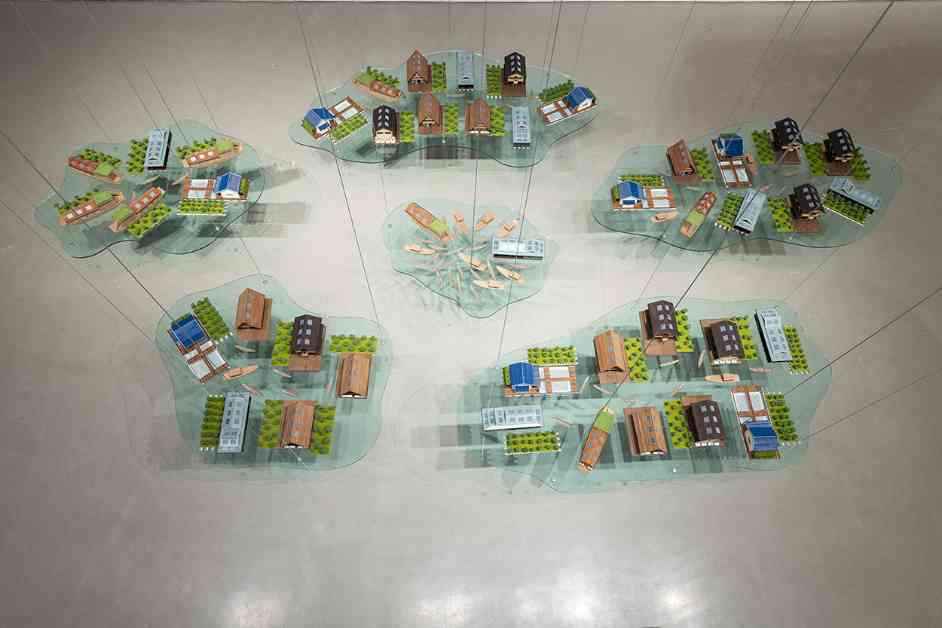Amidst the chaos of the raging fires in Los Angeles, an exhibition titled “Breath(e): Toward Climate and Social Justice” has made its way to the Moody Center for the Arts at Rice University, organized by the Hammer Museum and set to be on view in Houston until May 10. The decision to move the show from LA, a city besieged by disasters, to Houston, the energy capital of the world, seems to symbolize the urgency and universality of the climate crisis. While the world outside seems to be filled with fear and guilt, this exhibition takes a different approach.
The artists featured in this exhibition are not merely focused on highlighting the problems we face, but rather on exploring solutions and possibilities. From experimenting with new materials to envisioning speculative futures, these artists are using their creativity to provoke thought and inspire action. Xin Liu, for example, is working with a solvent that can dissolve plastic, while Cannupa Hanska Luger has created a sculptural installation featuring Indigenous space travelers outfitted in protective gear made from recycled materials.
Art Reflecting Reality
One of the standout pieces in the exhibition is Brandon Ballengée’s “MIA” series, which pays tribute to the species lost in the aftermath of the 2010 Deepwater Horizon oil spill. Through a combination of art and science, Ballengée has identified and painted 14 fish species that have disappeared since the disaster. His work serves as a powerful reminder of the human impact on the environment and the urgent need for change.
From Mourning to Hope
Another poignant piece in the exhibition is Clarissa Tossin’s “Rising Temperature Casualty (Prunus persica, home garden, Los Angeles), 2022,” which features a silicone cast of a peach tree that succumbed to the heat and drought of Los Angeles. The tree, hanging upside down from the ceiling, serves as a stark reminder of the consequences of climate change and the fragility of nature.
In the midst of this somber reflection, artist Mel Chin offers a different perspective. By choosing to focus on empathy rather than direct environmental issues, Chin emphasizes the importance of human connection and understanding in addressing the climate crisis. Through a collaborative project that visualizes personal stories and transformative moments, Chin seeks to build solidarity and inspire change.
As Rebecca Solnit once wrote, hope is the belief that what we do matters. This sentiment is echoed in LaToya Ruby Frazier’s “Flint is Family” photographs, which document the resilience and compassion of the community affected by the Flint water crisis. The images capture moments of unity and generosity, reminding us that even in the face of disaster, there is still goodness and hope to be found.
As we navigate the challenges of a changing climate, it is clear that art has a critical role to play in shaping our understanding and response to these issues. By reframing the narrative around climate change and highlighting the potential for positive change, artists are inspiring us to imagine a better future and take action to make it a reality. In a world filled with uncertainty, art offers us a glimpse of hope and a reminder of the power of human creativity and compassion.












